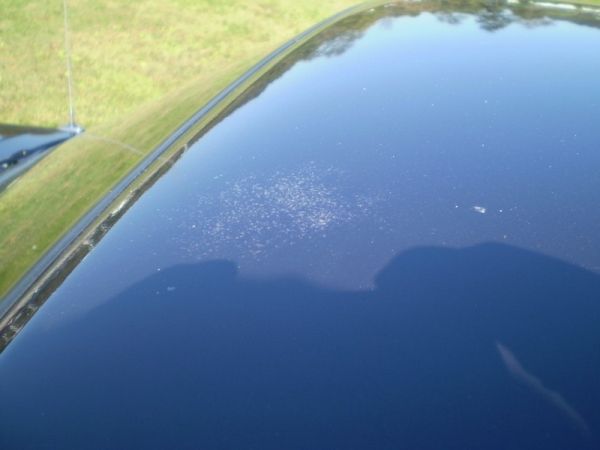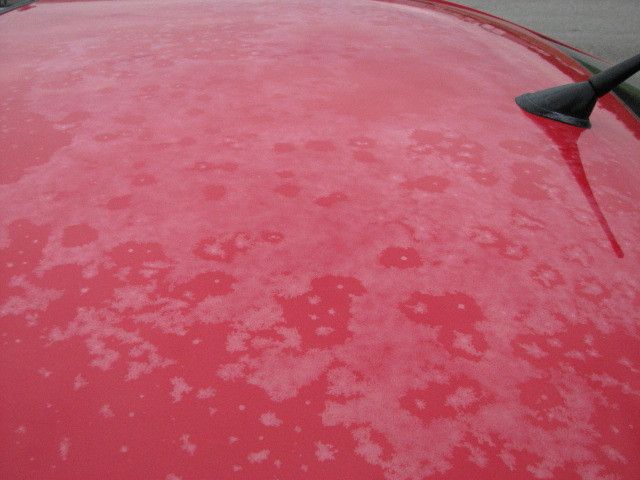Paint System
A BC_CC paint system comprises; a clear coat, which has no pigmentation (colour) that provides both protection and depth of gloss for the base coat. A base coat or colour coat has a pigmentation added to provide the vehicle colour.
Polymer degradation [: a change in the properties; tensile strength, colour, shape, etc f a polymer or polymer-based product under the influence of one or more environmental factors such as heat, light or chemicals such as acids, alkalis and some salts]
The clear coat is the final original equipment manufacturers coating applied to a vehicle to protect the (base) colour coat while providing both depth and a durable, glossy appearance, originally designed to protect metallic paints, but is now applied to all colours. Any product applied on top of the clear coat needs to be transparent otherwise both the paint colour and its depth of shine will be muted.
Many natural and synthetic materials are attacked by ultra-violet radiation and products made using these materials may crack or disintegrate. This problem is known as ultra violet photo degradation, and is a common problem in products exposed to sunlight.
Ultra violet (UV) radiation is known to contribute to the chemical modification (drying out the polymers and its resin binder system) of exposed paint surfaces resulting in loss of gloss, color change, chalking, flaking and eventually destruction of the paint film
Photo-oxidation of polymers
Photo-oxidation (sometimes incorrectly described as oxidation) [: the degradation of a polymer surface in the presence of oxygen or ozone]
Photo-oxidation (sometimes incorrectly described as oxidation) is a consequence of ultra violet (UV) radiation, which instigates a chemical change that reduces the polymer`s molecular weight. As a consequence of this change the material becomes more brittle, with a reduction in its tensile, impact and elongation strength. Discoloration and loss of surface smoothness accompany photo-oxidation. Infra red (heat) radiation or high surface temperature significantly increases the effect of photo-oxidation.
Clear coat failure- is the result of ultra violet radiation drying out both the polymer paint and its resin binder system, causing structural failure; the paint take on a dull grey cloudy appearance, then as time progresses this is accompanied by paint delamination (flaking) Once a paint surface structural integrity is compromised like this it usually means the paint requires replacement (re-painting)
It’s also worth noting that the UV absorbents migrate to the top of the clear coat, so one you remove too much clear 0.5 mil (12µ) you`ll have no paint ultra violet protection other than what you apply with a LSP
Relevant Articles
1. http://www.autopia.org/forum/car-det...-removal.html#
Results 1 to 1 of 1
Thread: Oxidation or Clear Coat Failure?
-
06-10-2012, 07:15 AM #1What gets overlooked too often is that one must be a student before becoming a teacher.
Thread Information
Users Browsing this Thread
There are currently 1 users browsing this thread. (0 members and 1 guests)
Similar Threads
-
Clear Coat Failure is Ram-pit Seems Like.
By Beemerboy in forum Everything ElseReplies: 3Last Post: 09-11-2014, 06:03 PM -
Is this clear coat failure or oxidation?
By staro0989 in forum Detailing Made SimpleReplies: 22Last Post: 11-22-2013, 09:32 PM -
Can opti-coat stop clear coat failure? Picture inside
By dfoxengr in forum Car Detailing Product DiscussionReplies: 6Last Post: 11-07-2012, 03:14 PM -
Oxidation or Clear coat failure? (w/ Pics)
By ZeroDCX in forum Machine Polishing & SandingReplies: 21Last Post: 06-11-2012, 06:41 PM -
clear coat failure or just heavy oxidation?
By rmsoulball in forum Car DetailingReplies: 0Last Post: 12-07-2008, 01:12 PM








 Reply With Quote
Reply With Quote
Bookmarks